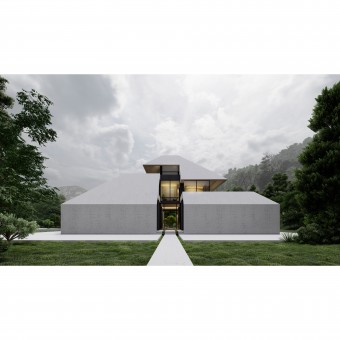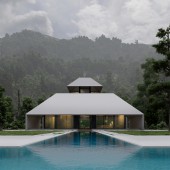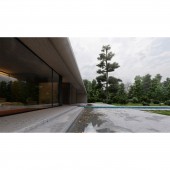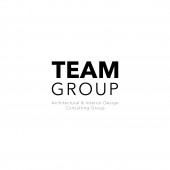Gilak Villa by Davood Salavati |
Home > Winners > #130433 |
 |
|
||||
| DESIGN DETAILS | |||||
| DESIGN NAME: Gilak PRIMARY FUNCTION: Villa INSPIRATION: The climatic architecture of traditional buildings in their evolution can be the best source of inspiration and underlie today's architectural ideas. Tribal trial and error in diverse lands have created a great civilization in housing and along with intellectual maturity in the field of civil engineering and architecture, has reached the ability to largely control the annoying and harmful factors. With the knowledge that humidity, wind, radiation, et in addition to being able to eliminate basic needs. If they are out of comfort range, they are more or less irritating. The original Iranian architecture in different climatic regions has achieved very significant indigenous and sustainable answers that have sometimes been forgotten due to the modern way of life. Nowadays, the extreme consumption of unsustainable energies of human society has caused many problems and obstacles sustainable indigenous techniques that have been using traditional technologies and integrating them with original and efficient geometries, have provided very appropriate answers in their time and are the best option to help architectural design today. In our project, an attempt has been made to use the climatic techniques of temperate and humid regions in Iran; which control humidity, wind, radiation and bring the standard of living closer to the comfort range. These items work best in the form of a nine-square geometric technique and are based on the geometry of Iranian architecture and Iranian carpets. UNIQUE PROPERTIES / PROJECT DESCRIPTION: The main mass of the building is formed around the central axis, which is designed as an integrated void and in all floors, there are openings to it from all four directions, which cause airflow and moisture to escape from inside the building. The surrounding movement path, which exists as a corridor around the building, helps the airflow and prevents air confinement. The stretch of the gables on the corridors around the building controls the direct sunlight inside the building in hot seasons and prevents the ambient temperature from rising. Sloping and homogeneous roofs on all four sides of the building can control rainwater and at the end, direct rainwater to a path for collection and reuse. Also, the integrated roof surface provides the ability to use photovoltaic panels. Radiation, humidity, and airflow control throughout the building are automatic with minimal consumption of non-renewable energy. OPERATION / FLOW / INTERACTION: - PROJECT DURATION AND LOCATION: Gilak Villa is located in Gilan, a province that is located in the north of Iran and along the southern shores of the Caspian Sea its prominent features are humidity and heavy rainfall. In this region, the trend of expansion is based on climatic priorities and from the south, east, west, and then in height. The combination of these factors, along with the extroversion factor, has led to the creation of a unique architecture that can be considered as the main reason for its formation. In general, extroversion with a sloping roof is a special feature of the architecture of this area. In this architecture, there is no clear boundary between inside and outside, and semi-open spaces and transparent layers of the house combine the inside and outside space. The transparency and semi-openness of the outer layers of the building, the effect of weather conditions such as sun, wind, rain, etc. as well as summer and winter on the lives of residents and their connection with nature as much as possible. FITS BEST INTO CATEGORY: Architecture, Building and Structure Design |
PRODUCTION / REALIZATION TECHNOLOGY: - SPECIFICATIONS / TECHNICAL PROPERTIES: It's a concept design. TAGS: Gilak Villa, climatic architecture, traditional building RESEARCH ABSTRACT: The climatic architecture of traditional buildings in their evolution can be the best source of inspiration and underlie today's architectural ideas. Tribal trial and error in diverse lands have created a great civilization in housing and along with intellectual maturity in the field of civil engineering and architecture, has reached the ability to largely control the annoying and harmful factors. With the knowledge that humidity, wind, radiation, et in addition to being able to eliminate basic needs. If they are out of comfort range, they are more or less irritating. The original Iranian architecture in different climatic regions has achieved very significant indigenous and sustainable answers that have sometimes been forgotten due to the modern way of life. Nowadays, the extreme consumption of unsustainable energies of human society has caused many problems and obstacles sustainable indigenous techniques that have been using traditional technologies and integrating them with original and efficient geometries, have provided very appropriate answers in their time and are the best option to help architectural design today. In our project, an attempt has been made to use the climatic techniques of temperate and humid regions in Iran; which control humidity, wind, radiation and bring the standard of living closer to the comfort range. These items work best in the form of a nine-square geometric technique and are based on the geometry of Iranian architecture and Iranian carpets. The main mass of the building is formed around the central axis, which is designed as an integrated void and in all floors, there are openings to it from all four directions, which cause airflow and moisture to escape from inside the building. The surrounding movement path, which exists as a corridor around the building, helps the airflow and prevents air confinement. The stretch of the gables on the corridors around the building controls the direct sunlight inside the building in hot seasons and prevents the ambient temperature from rising. Sloping and homogeneous roofs on all four sides of the building can control rainwater and at the end, direct rainwater to a path for collection and reuse. Also, the integrated roof surface provides the ability to use photovoltaic panels. Radiation, humidity, and airflow control throughout the building are automatic with minimal consumption of non-renewable energy. CHALLENGE: - ADDED DATE: 2021-09-21 11:48:21 TEAM MEMBERS (3) : Davood Salavati, Amirali Sharifi and Nazli Azarkhsh. IMAGE CREDITS: Davood Salavati, 2021. |
||||
| Visit the following page to learn more: https://teamgroup.ir/ | |||||
| AWARD DETAILS | |
 |
Gilak Villa by Davood Salavati is Winner in Architecture, Building and Structure Design Category, 2021 - 2022.· Read the interview with designer Davood Salavati for design Gilak here.· Press Members: Login or Register to request an exclusive interview with Davood Salavati. · Click here to register inorder to view the profile and other works by Davood Salavati. |
| SOCIAL |
| + Add to Likes / Favorites | Send to My Email | Comment | Testimonials | View Press-Release | Press Kit |
Did you like Davood Salavati's Architecture Design?
You will most likely enjoy other award winning architecture design as well.
Click here to view more Award Winning Architecture Design.








